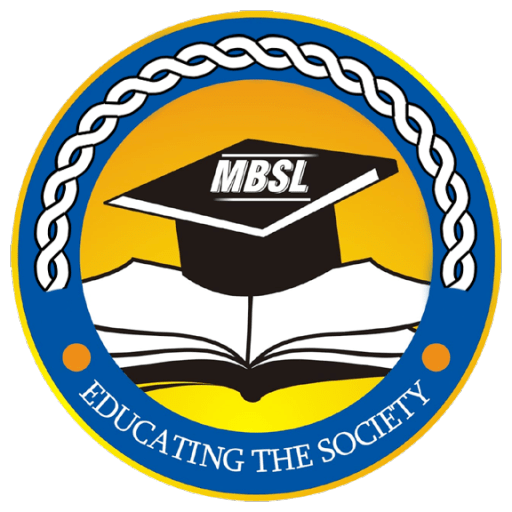Duolingo English Test Speaking Section
The speaking section of the Duolingo English Test assesses your ability to speak English fluently and coherently. Here are the key components:
1. Read Aloud
- Task: You will see a sentence on your screen. Read the sentence aloud clearly and accurately.
- Objective: This task evaluates your pronunciation, fluency, and ability to accurately read written English.
2. Describe Image
- Task: An image will appear on your screen. Describe the image in as much detail as possible within the given time limit.
- Objective: This task tests your ability to think quickly, organize your thoughts, and describe visual information using appropriate vocabulary and grammar.
3. Listen and Speak
- Task: You will listen to a spoken prompt and then respond to it verbally. The prompt could be a question, a statement, or a conversation.
- Objective: This task assesses your listening comprehension and ability to respond appropriately in English.
4. Speak about the Photo
- Task: You will be shown a photo and asked to speak about it. Describe what you see, what might be happening, and any possible implications or scenarios related to the image.
- Objective: This task evaluates your descriptive skills, creativity, and ability to convey detailed information.
5. Speaking Prompts
- Task: You will be given a prompt to discuss. This could be a question about your opinions, experiences, or hypothetical scenarios. Speak fluently and provide detailed responses.
- Objective: This task measures your ability to articulate your thoughts, express opinions, and speak naturally and coherently.
Duolingo English Test Writing Section
The writing section of the Duolingo English Test assesses your ability to write clearly and effectively in English. Here are the key components:
1. Write About the Photo
- Task: You will see a photo and be asked to write a detailed description of it. You need to describe what you see, any actions happening, and the overall context of the image.
- Objective: This task evaluates your descriptive skills, vocabulary, and ability to convey visual information in written form.
Tips:
Focus on specific details in the photo.
Use a variety of adjectives and nouns.
Ensure your sentences are clear and grammatically correct.
2. Writing Prompts
- Task: You will be given a prompt that requires you to write an extended response. Prompts may ask you to express your opinion, provide a solution to a problem, or discuss a given topic.
- Objective: This task assesses your ability to develop coherent arguments, use appropriate vocabulary and grammar, and organize your thoughts logically.
Tips:
Plan your response before you start writing.
Use clear and concise language.
Ensure your response has an introduction, body paragraphs, and a conclusion.
3. Write One Sentence
- Task: You will be asked to write a single sentence based on a given word or prompt. This task checks your ability to create grammatically correct and meaningful sentences.
- Objective: This task tests your grammar, vocabulary, and sentence structure.
Tips:
Make sure your sentence is clear and grammatically correct.
Use appropriate punctuation.
Avoid run-on sentences or fragments.
4. Writing Extended Responses
- Task: You will be required to write a longer piece on a given topic. This could be in the form of an essay, letter, or article.
- Objective: This task evaluates your ability to organize and develop ideas, use varied vocabulary and complex sentence structures, and write cohesively.
Tips:
- Organize your response with an introduction, body, and conclusion.
- Support your ideas with examples and explanations.
- Use transition words to connect your ideas smoothly.
General Tips for Success in the Writing Section:
Practice Regularly: The more you write, the better you’ll get. Practice writing on different topics and get feedback to improve.
Expand Your Vocabulary: Work on expanding your vocabulary to express your ideas more effectively. Learn synonyms and different word forms.
Focus on Grammar: Pay attention to grammar rules, punctuation, and sentence structure. Practice writing grammatically correct sentences.
Plan Your Responses: Before you start writing, take a few moments to plan your response. Outline your main points and how you’ll support them.
Proofread: Always proofread your responses for errors and clarity. Make sure your writing is coherent and free of mistakes.
By understanding the format and practicing these tasks, you’ll be well-prepared for the writing section of the Duolingo English Test.
Tab Content
Duolingo English Test Reading Section
The reading section of the Duolingo English Test assesses your ability to understand and interpret written English. Here are the key components:
1. C-Test:
- Task: You will see a passage with some of its words partially removed. Your task is to fill in the missing parts of these words.
- Objective: This task evaluates your ability to recognize and complete words based on context clues and your overall comprehension skills.
Tips:
Use context to deduce the missing letters.
Focus on understanding the meaning of the entire passage to guide your word completion.
2. Identify the Real English Words:
- Task: You will be presented with a list of words that includes both real and made-up words. You need to identify the real English words from the list.
- Objective: This task tests your vocabulary and word recognition skills.
Tips:
Rely on your vocabulary knowledge.
Look for familiar word patterns and roots.
3. Read and Select:
- Task: You will see a sentence with a blank space, and you will need to select the most appropriate word or phrase to fill in the blank from the given options.
- Objective: This task evaluates your ability to understand sentence structure and context to choose the correct word or phrase.
Tips:
Pay attention to the context of the sentence.
Eliminate options that don’t fit grammatically or contextually.
4. Read and Complete:
- Task: You will read a passage with some missing words, and you need to fill in the blanks with the appropriate words from a given list.
- Objective: This task assesses your ability to understand the overall meaning of the passage and choose words that best complete the sentences.
Tips:
Understand the context and flow of the passage.
Ensure the words you choose fit both grammatically and contextually.
General Tips for Success in the Reading Section:
Practice Reading: Regularly read various types of English texts, such as articles, essays, and stories, to improve your comprehension skills.
Expand Vocabulary: Work on building your vocabulary to recognize more words and understand different contexts better.
Context Clues: Use context clues to infer the meaning of unfamiliar words and complete sentences.
Practice Tests: Take practice tests to get familiar with the format and types of questions you will encounter in the reading section.
Time Management: Practice managing your time effectively during reading tasks to ensure you can complete them within the given time.
By understanding the format and practicing these tasks, you’ll be well-prepared for the reading section of the Duolingo English Test.
Scoring Breakdown
1. Literacy (10-160)
- Reading and Writing: This sub-score measures your ability to read and write in English.
- Reading: Tasks include identifying real words, C-test, and reading comprehension.
- Writing: Tasks include writing prompts, writing about the photo, and typing statements.
2. Conversation (10-160)
- Speaking and Listening: This sub-score assesses your ability to speak and understand spoken English.
- Speaking: Tasks include speaking prompts, describing images, and speaking about audio.
- Listening: Tasks include listening and selecting, listening to and typing statements, and listening for comprehension.
3. Comprehension (10-160)
- Reading and Listening: This sub-score evaluates your overall understanding of written and spoken English.
- Reading: Includes tasks like identifying real words, C-test, and reading comprehension.
- Listening: Includes tasks like listening and selecting, listening and typing, and listening for comprehension.
4. Production (10-160)
- Speaking and Writing: This sub-score measures your ability to produce spoken and written English.
- Speaking: Includes tasks like speaking prompts, describing images, and speaking about audio.
- Writing: Includes tasks like writing prompts, writing about the photo, and typing statements.
Overall Score
- The overall score is calculated based on your performance across all tasks and sub-scores. It provides a comprehensive assessment of your English language proficiency.
- The scores are divided into the following ranges:
- 10-55: Basic proficiency
- 60-85: Intermediate proficiency
- 90-115: Upper-intermediate proficiency
- 120-160: Advanced proficiency
Test Results
- Quick Results: You will receive your test results within 48 hours of completing the test.
- Score Report: The detailed score report includes your overall score and sub-scores, along with performance feedback.
Understanding the scoring system will help you focus on improving specific areas to achieve your desired proficiency level.
Common Mistakes on Duolingo
Rushing Through Lessons: Trying to complete lessons quickly can lead to mistakes and missed learning opportunities. Take your time to understand each lesson thoroughly.
Ignoring Mistakes: Not reviewing mistakes or skipping over them can hinder progress. It’s important to learn from errors and understand why they were wrong.
Over-Focusing on XP: Some learners focus too much on earning XP (experience points) and not enough on actually learning the language. Remember, the goal is to improve your language skills, not just to rack up points.
Neglecting Listening Practice: Listening is a crucial part of language learning, but it’s often overlooked. Make sure to practice listening exercises regularly.
Not Using Crowns: Crowns indicate mastery of a lesson, but some learners ignore them. Aim to earn crowns to ensure you’ve truly understood the material.
Skipping Practice: Consistency is key in language learning. Skipping days or not practicing regularly can slow down progress.
Not Taking Notes: Taking notes during lessons can help reinforce learning and provide a reference for review.
Ignoring Feedback: Feedback is valuable for improvement, but some learners ignore it. Pay attention to feedback and use it to correct mistakes.
Not Practicing Speaking: Speaking practice is essential, but many learners don’t practice enough. Use speaking exercises to improve pronunciation and fluency.
Studying in a Noisy Environment: Taking lessons in a noisy or distracting environment can hinder concentration and learning. Find a quiet place to study.
By avoiding these common mistakes and focusing on consistent, mindful practice, you’ll make better progress on Duolingo.
Do you have any specific challenges you’re facing with Duolingo?

